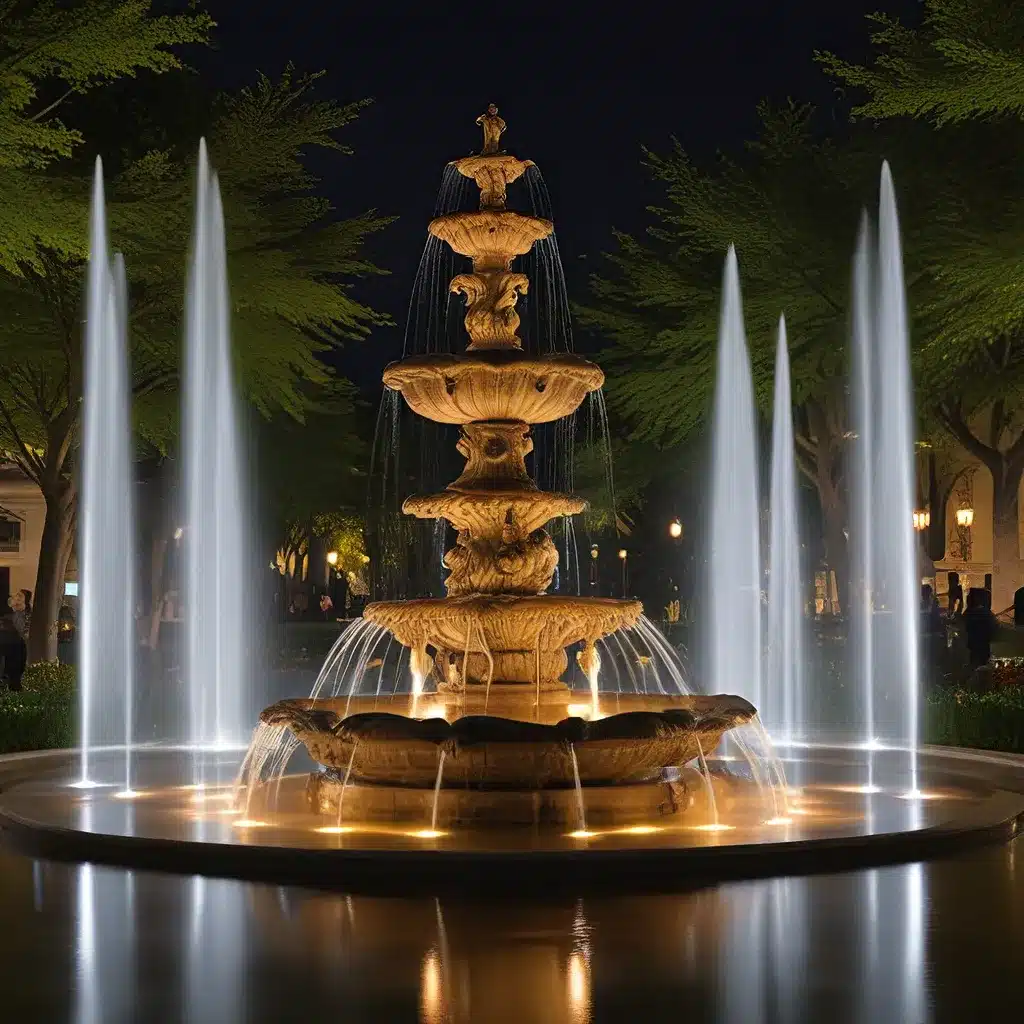
Fountain Design Essentials – Welcome to Fountain Lights
Fountain Design Essentials – Welcome to Fountain Lights

As a passionate photographer, I’ve always been captivated by the mesmerizing dance of water, whether it’s the cascading flow of a waterfall or the playful spray of a fountain. When it comes to capturing these liquid wonders, the use of light can truly elevate the experience, transforming ordinary scenes into something extraordinary. That’s why I’m thrilled to share with you some of the innovative approaches to waterfall and fountain lighting that I’ve discovered in my adventures.
One of the most rewarding techniques in waterfall and fountain photography is the use of long exposure. By slowing down the shutter speed, you can create a dreamlike, ethereal effect that makes the water appear to flow like silk. This technique is not only visually stunning but also surprisingly simple to execute, even without fancy equipment.
The key is to find the right balance between your camera’s ISO, aperture, and shutter speed. By lowering the ISO to the minimum setting and closing down the aperture to the highest possible value (usually around f/22), you can allow the shutter to remain open for longer, capturing the movement of the water.
The Wandering Lens has an excellent guide on this process, highlighting the importance of finding a steady subject within the frame to create a beautiful contrast between the sharp and blurred elements. I’ve personally found that including natural objects, like rocks, logs, or branches, can really enhance the overall composition.
When it comes to capturing waterfalls, wide-angle lenses are your best friends. These lenses allow you to frame the entire scene, showcasing the grandeur of the cascading water and its surrounding natural beauty. I love using my Olympus M.Zuiko 7-14mm f/2.8 PRO lens for this purpose, as it provides a stunning wide-angle perspective without sacrificing image quality.
One of the techniques I’ve discovered is to use the dodge tool or simply increase the brightness of the water itself. This helps to enhance the movement and flow, drawing the viewer’s eye directly to the star of the show. It’s a simple but effective trick that can really make your waterfall images pop.
While long exposure techniques work wonders for waterfalls, they can be a bit more challenging when it comes to capturing the dynamic movement of fountains. That’s where fiber optic lighting comes into play, and it’s a technique that has completely transformed the way I approach fountain photography.
Fiber optic lighting allows you to control the illumination of the fountain, creating mesmerizing patterns and color effects that would be impossible to capture through traditional long exposure methods. By strategically placing the fiber optic cables around the fountain, you can paint the water with a vibrant array of hues, transforming a simple water display into a captivating work of art.
The beauty of this technique is that it doesn’t require any special equipment beyond the fiber optic cables and a light source. It’s a cost-effective and versatile solution that can be used in both professional and DIY fountain lighting setups, such as those found on fountainlights.net.
Another fascinating aspect of fountain lighting is the use of ultraviolet (UV) disinfection. This technology, which is commonly used in water treatment, can also be employed to maintain the cleanliness and purity of fountain water.
By incorporating UV disinfection into the fountain’s lighting system, you can help to eliminate harmful bacteria and keep the water sparkling clean. This not only enhances the visual appeal of the fountain but also ensures a safe and healthy environment for those who enjoy its mesmerizing display.
As with any creative endeavor, the world of waterfall and fountain lighting is filled with endless possibilities and unexpected discoveries. I’ve found that the most rewarding moments often come when I’m willing to step outside my comfort zone and experiment with new techniques or perspectives.
Whether it’s trying a different camera angle, experimenting with color filters, or even incorporating motion-activated lighting, the key is to approach each situation with an open mind and a willingness to explore the unknown. You never know what fascinating results might emerge from these explorations.
As I continue my journey through the captivating realm of waterfall and fountain lighting, I’m constantly amazed by the innovations and advancements happening in this field. From the magic of long exposure to the versatility of fiber optics and the power of UV disinfection, the possibilities seem endless.
I encourage you to embrace the adventure and dive into the world of liquid luminance. Whether you’re a seasoned photographer or simply someone who appreciates the beauty of water, there’s always something new to discover. So grab your camera, experiment with different techniques, and let the water dance with light. Who knows what enchanting masterpieces you might create?
Share to :
Subscribe to our newsletter for the latest in fountain design, innovative lighting ideas, and exclusive tips straight to your inbox. Join the community shaping the future of water features.

Rapid delivery to your doorstep.

Excellence in every product.

Great value for your investment.

Assistance at any hour.
Fountain Lights — Illuminating creativity in every splash!
Copyright © 2023. All Right Reserved